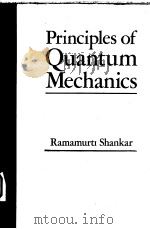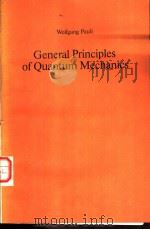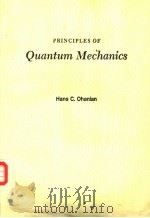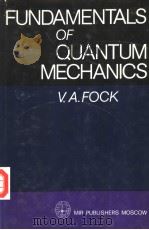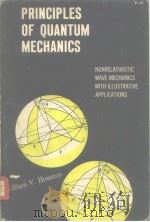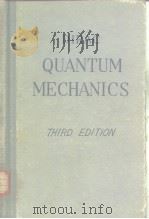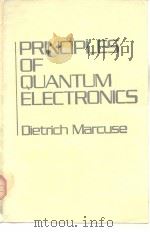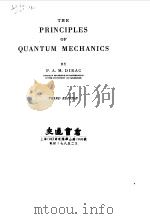《PRINCIPLES OF QUANTUM MECHANICS》
| 作者 | RAMAMURTI SHANKAR 编者 |
|---|---|
| 出版 | PLENUM PRESS |
| 参考页数 | 612 |
| 出版时间 | 1980(求助前请核对) 目录预览 |
| ISBN号 | 0306403978 — 求助条款 |
| PDF编号 | 813861828(仅供预览,未存储实际文件) |
| 求助格式 | 扫描PDF(若分多册发行,每次仅能受理1册) |
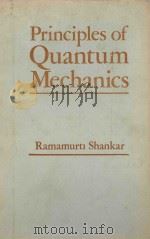
1. Mathematical Introduction1
1.1. Linear Vector Spaces:Basics1
1.2. Inner Product Spaces7
1.3. The Dirac Notation13
1.4. Subspaces20
1.5. Linear Operators21
1.6. Matrix Elements of Linear Operators23
1.7. Active and Passive Transformations32
1.8. The Eigenvalue Problem33
1.9. Functions of Operators and Related Concepts58
1.10. Generalization to Infinite Dimensions61
2. Review of Classical Mechanics79
2.1. The Principle of Least Action and Lagrangian Mechanics79
2.2. The Electromagnetic Lagrangian88
2.3. The Two-Body Problem89
2.4. How Smart Is a Particle?91
2.5. The Hamiltonian Formalism91
2.6. The Electromagnetic Force in the Hamiltonian Scheme95
2.7. Cyclic Coordinates,Poisson Brackets,and Canonical Transformations96
2.8. Symmetries and Their Consequences104
3. All Is Not Well with Classical Mechanics111
3.1. Particles and Waves in Classical Physics111
3.2. An Experiment with Waves and Particles(Classical)112
3.3. The Double-Slit Experiment with Light115
3.4. Matter Waves(de Broglie Waves)117
3.5. Conclusions118
4. The Postulates——A General Discussion119
4.1. The Postulates119
4.2. Discussion of Postulates Ⅰ-Ⅲ121
4.3. The Schrodinger Equation151
5. Simple Problems in One Dimension159
5.1. The Free Particle159
5.2. The Particle in a Box165
5.3. The Continuity Equation for Probability174
5.4. The Single-Step Potential:A Problem in Scattering177
5.5. The Double-Slit Experiment186
5.6. Some Theorems186
6. The Classical Limit189
7. The Harmonic Oscillator195
7.1. Why Study the Harmonic Oscillator?195
7.2. Review of the Classical Oscillator199
7.3. Quantization of the Oscillator(Coordinate Basis)199
7.4. The Oscillator in the Energy Basis214
7.5. Passage from the Energy Basis to the X Basis227
8. The Path Integral Formulation of Quantum Theory233
8.1. The Path Integral Recipe233
8.2. Analysis of the Recipe234
8.3. An Approximation to U(t)for the Free Particle235
8.4. Path Integral Evaluation of the Free-Particle Propagator237
8.5. Equivalence to the Schrodinger Equation240
8.6. Potentials of the form V= a+bx+cx2+dx+exx242
9. The Heisenberg Uncertainty Relations245
9.1. Introduction245
9.2. Derivation of the Uncertainty Relations245
9.3. The Minimum Uncertainty Packet247
9.4. Applications of the Uncertainty Principle249
9.5. The Energy-Time Uncertainty Relation252
10. Systems with N Degrees of Freedom255
10.1. N Particles in One Dimension255
10.2. More Particles in More Dimensions267
10.3. Identical Particles268
11. Symmetries and Their Consequences289
11.1. Overview289
11.2. Translational Invariance in Quantum Theory289
11.3. Time Translational Invariance305
11.4. Parity Invariance307
12. Rotational Invariance and Angular Momentum313
12.1. Translations in Two Dimensions313
12.2. Rotations in Two Dimensions314
12.3. The Eigenvalue Problem of L2321
12.4. Angular Momentum in Three Dimensions326
12.5. The Eigenvalue Problem of L2 and Lz330
12.6. Solution of Rotationally Invariant Problems349
13. The Hydrogen Atom363
13.1. The Eigenvalue Problem363
13.2. The Degeneracy of the Hydrogen Spectrum369
13.3. Numerical Estimates and Comparison with Experiment371
13.4. Multielectron Atoms and the Periodic Table379
14. Spin383
14.1. Introduction383
14.2. What is the Nature of Spin?383
14.3. Kinematics of Spin384
14.4. Spin Dynamics396
14.5. Return of Orbital Degrees of Freedom408
15. Addition of Angular Momenta413
15.1. A Simple Example413
15.2. The General Problem418
15.3. Irreducible Tensor Operators426
15.4. Explanation of Some “Accidental” Degeneracies432
16. Variational and WKB Methods439
16.1. The Variational Method439
16.2. The Wentzel-Kramers-Brillouin Method446
17. Time-Independent Perturbation Theory459
17.1. The Formalism459
17.2. Some Examples462
17.3. Degenerate Perturbation Theory473
18. Time-Dependent Perturbation Theory481
18.1. The Problem481
18.2. First-Order Perturbation Theory482
18.3. Higher Orders in Perturbation Theory492
18.4. A General Discussion of the Electromagnetic Interactions501
18.5. Interaction of Atoms with Electromagnetic Radiation508
19. Scattering Theory533
19.1. Introduction533
19.2. Recapitulation of One-Dimensional Scattering and Overview534
19.3. The Born Approximation(Time-Dependent Description)540
19.4. Born Again(Time-Independent Approximation)545
19.5. The Partial Wave Expansion556
19.6. Two-Particle Scattering567
20. The Dirac Equation575
20.1. The Free-Particle Dirac Equation575
20.2. Electromagnetic Interaction of the Dirac Particle578
20.3. More on Relativistic Quantum Mechanics586
Appendix593
A.1.Matrix Inversion593
A.2.Gaussian Integrals596
A.3.Complex Numbers598
ANSWERS TO SELECTED EXERCISES601
TABLE OF CONSTANTS605
INDEX607
1980《PRINCIPLES OF QUANTUM MECHANICS》由于是年代较久的资料都绝版了,几乎不可能购买到实物。如果大家为了学习确实需要,可向博主求助其电子版PDF文件(由RAMAMURTI SHANKAR 1980 PLENUM PRESS 出版的版本) 。对合法合规的求助,我会当即受理并将下载地址发送给你。
高度相关资料
-
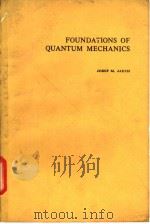
- FOUNDATIONS OF QUANTUM MECHANICS
- 1968 ADDISON-WESLEY PUBLISHING COMPANY,INC ADVANCED BOOK PPOGRAM
-

- PRINCIPLES OF QUANTUM MECHANICS
- 1980 PLENUM PRESS
-
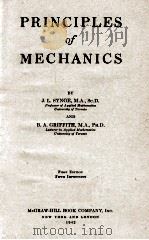
- Principles of mechanics
- 1942 McGraw-Hill
-
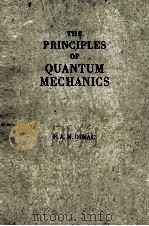
- THE PRINCIPLES OF QUANTUM MECHANICS FOURTH EDITION
- 1958 AT THE CLARENDON PRESS
-
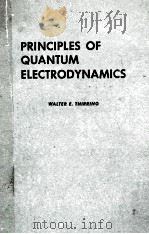
- PRINCIPLES OF QUANTUM ELECTRODYNAMICS
- 1958 ACADEMIC PRESS INC. PUBLISHERS
提示:百度云已更名为百度网盘(百度盘),天翼云盘、微盘下载地址……暂未提供。➥ PDF文字可复制化或转WORD
